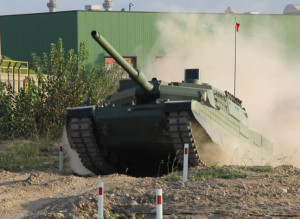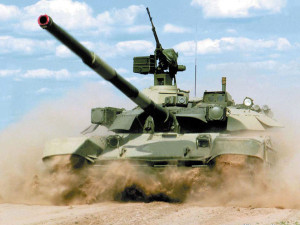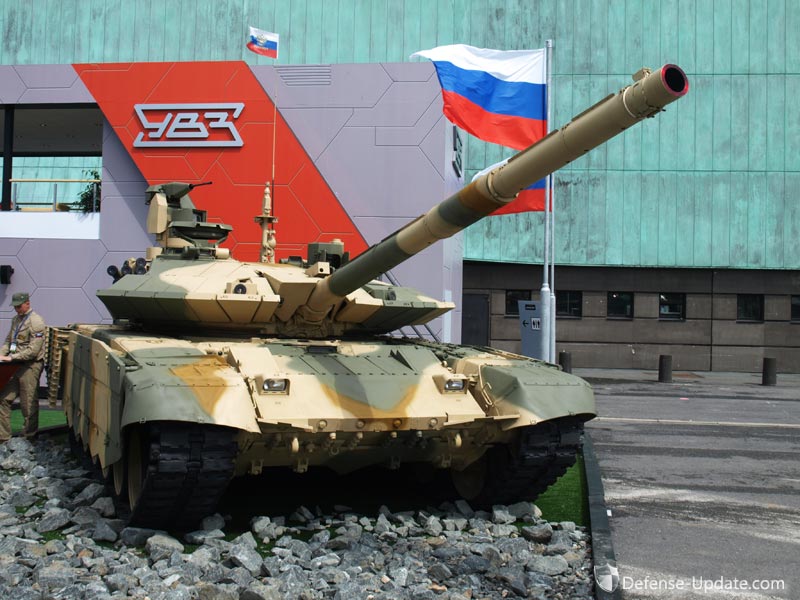
With the world’s largest armies (except China and India) have ceased procurement of Main Battle Tanks (MBT), third world countries are becoming more dominant customers for this weapon category. In recent years, following major reorganization programs, where western armies have been retiring their armored regiments, severely eroding the production base of heavy armored vehicles, countries of the former Soviet Union and China are finding markets for tanks in developing countries. New production orders for T-90 from Russia, T-84 Oplot from the Ukraine and Chinese MBT-2000) tanks are keeping these lines open. Thailand has placed orders for 200 T-84 tanks, and is expecting the first of these T-84s by May 2013. These tanks will be used for initial introduction and training. A second shipment completing the training unit and equipping the first battalion will be completed by 2015.


South Korea and Turkey are two countries maintaining MBT production capacity based on a common design – the South Korean K-2 and Turkish Altai, which is still in prototype stage. The South Korean K-2 entered production in 2012. Hyundai Rotem Company was contracted by Turkey to provide the technology transfer for the Altai program. The company teamed with Otokar from Turkey to set up the production facility for the tank in Turkey. The first two prototypes went through initial testing in late 2012. However, since 2011 the Turkish side has assumed full responsibility for the program. One month into the testing, of the first two prototypes, Turkish officials expressed confidence the program could move into production by 2015 – two years ahead of schedule. Turkey plans to field up to 250 of the new tanks.
The Bangladesh Army has also begun inducting fourth-generation China-made MTB-2000 tanks. Bangladesh has placed an order for 44 of these MBT2000 tanks The deal is worth $162 million. The new tanks were displayed for the first time in September 2012 during an official ceremony. The MBT2000 closely resembles the Al Khalid tanks, which is in the service of the Pakistan army since 2001. This is the first time Bangladesh has obtained newly assembled Main Battle Tanks (MBTs). Its army has around 200 older-generation Chinese tanks, which have been upgraded in phases with Beijing’s assistance to keep them in service.

The largest customer for MBTs – India, is planning to produce up to 1,700 Russian designed T-90 tanks. 310 of the tanks were ordered and supplied from Russia in 2001. Additional 300 were ordered in 2006, and are being assembled locally in India, at Heavy Vehicle Factory (HVF) in Avadi, Chennai. The projected order could cap over 2,000, some of which are expected to be upgraded T-90MS. India is also producing 124 domestically developed Arjun MkII tanks, these tanks are expected to be inducted into service after 2013. India is also undertaking continuous upgrades for its T-72 tanks, the most recent included fire control and night vision improvements. Future work could also include active protection systems and weapon improvements (including gun-fired missiles. As part of this upgrade India acquired 418 Israeli made Thermal Imaging Fire Control Systems (TIFAC) for around $230. Part of the system is locally produced in India.
Among western MBTs the M-1A2 and Merkava Mk 4 are in production, though in small numbers. Orders for Merkava 4 tanks in service only in the Israeli Army are annually, maintaining the production line in Israel open while the M-1 line is maintained with orders for the Egyptian Army. Significant upgrade work on M-1A2 is expected this years, secured by recent orders from the US Army and Saudi-Arabia.
General Dynamics Land Systems announced January 8th it has been awarded $132.7 million for the procurement and production of 69 Saudi M1A2 (M1A2S) Abrams tanks for the Kingdom of Saudi Arabia. his work is part of a plan by the Kingdom of Saudi Arabia to upgrade its fleet of tanks. This contract extends work started in 2008 to update M1A1 and M1A2 tanks to the M1A2S configuration for the Kingdom of Saudi Arabia. The M1A2S conversion increases the efficiency and capability of the tank. This order will help the company maintain the workforce at its Lima, Ohio plant through July 2014.
Leopard II is not in production but of the three, it has the brightest future, as both Qatar and Saudi Arabia have expressed interest in buying about 1,000 of these tanks. Unlike the M-1A1/A2 or Merkava, Leopard II has also become quite popular in the second-hand market, after most European armies have trimmed their heavy forces, and offered their tanks to foreign nations. The main customers for these tanks are Singapore, Malaysia, Indonesia, Portugal, Canada and Chile.




















